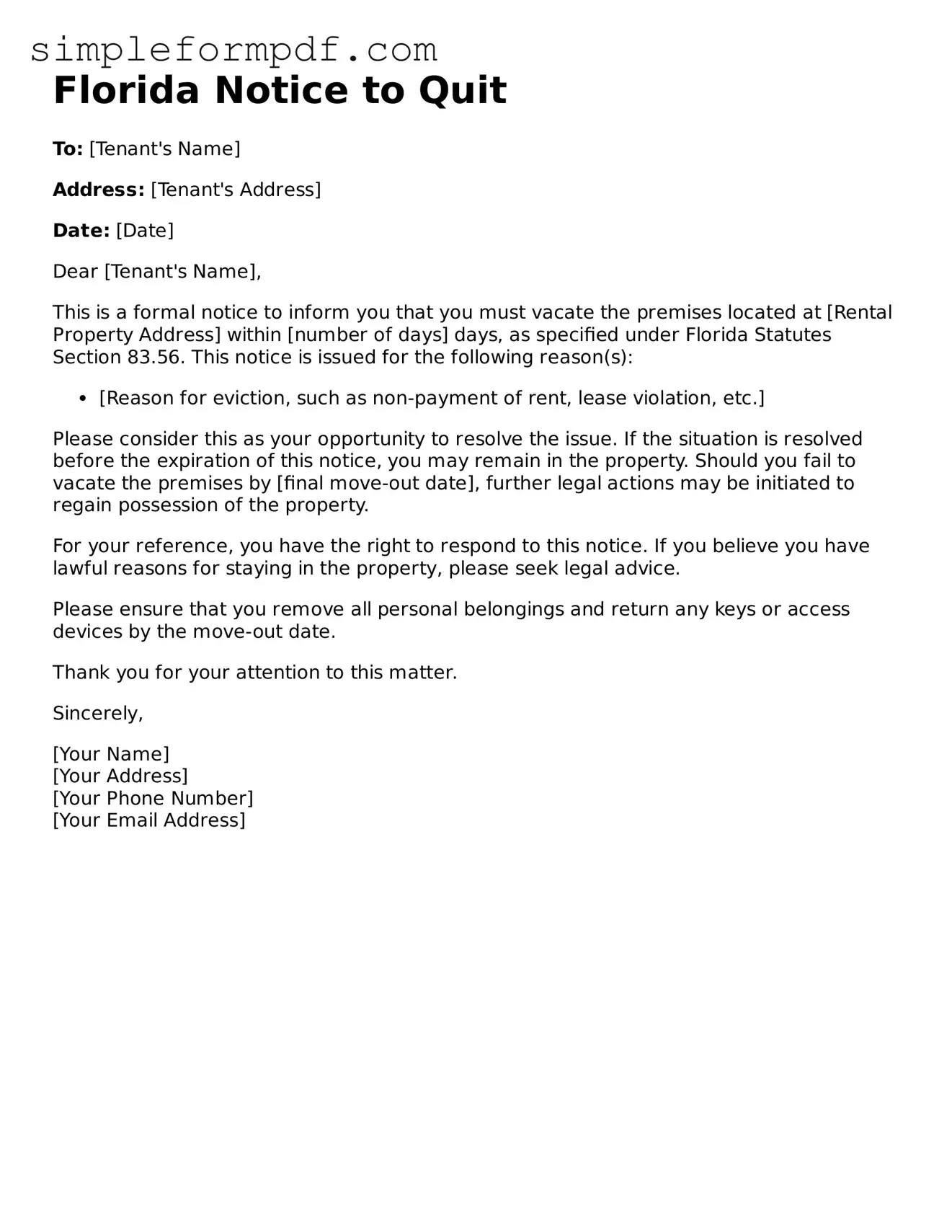Florida Notice to Quit
To: [Tenant's Name]
Address: [Tenant's Address]
Date: [Date]
Dear [Tenant's Name],
This is a formal notice to inform you that you must vacate the premises located at [Rental Property Address] within [number of days] days, as specified under Florida Statutes Section 83.56. This notice is issued for the following reason(s):
- [Reason for eviction, such as non-payment of rent, lease violation, etc.]
Please consider this as your opportunity to resolve the issue. If the situation is resolved before the expiration of this notice, you may remain in the property. Should you fail to vacate the premises by [final move-out date], further legal actions may be initiated to regain possession of the property.
For your reference, you have the right to respond to this notice. If you believe you have lawful reasons for staying in the property, please seek legal advice.
Please ensure that you remove all personal belongings and return any keys or access devices by the move-out date.
Thank you for your attention to this matter.
Sincerely,
[Your Name]
[Your Address]
[Your Phone Number]
[Your Email Address]
